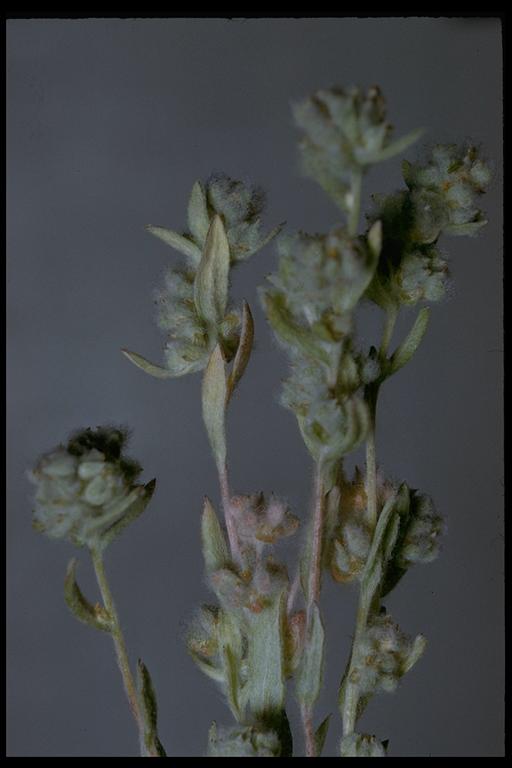Annuals, 1-50 cm. Stems 1, ± erect, or 2-5[-10], ascending to erect [prostrate]. Leaves cauline; mostly alternate [opposite]; blades narrowly oblanceolate to elliptic [spatulate]. Heads usually in glomerules of 2-5 in racemiform to paniculiform or distally ± dichasiform [axillary] arrays, sometimes borne singly. Involucres inconspicuous. Phyllaries 4-6, ± equal (unlike paleae, scarious, hyaline). Receptacles depressed-spheric or obovoid (heights 0.5-1.8 times diams.), glabrous. Pistillate paleae falling, erect to incurved; bodies with 5+ nerves (nerves ± parallel, obscure), obovoid, saccate most of lengths (trigonously [evenly] compressed, galeate, abaxially rounded [corniculate-crested], each enclosing a floret); wings ± erect (and lateral) or inflexed (and subapical). Staminate paleae 0 or 1-3, falling, erect in fruit (not enlarged), shorter than pistillate paleae; bodies linear-lanceolate to oblanceolate. Pistillate florets 4-12. Functionally staminate florets 2-5; corolla lobes 4-5, ± equal. Bisexual florets 0. Cypselae brown, monomorphic: ± trigonously [evenly] compressed, ± obovoid, curved, gibbous abaxially, faces glabrous, smooth, shiny, corolla scars ± lateral; pappi: pistillate 0, staminate 0 or of 1-5 bristles (hidden in heads). x = 14.
See discussion of Filagininae following the tribal description (p. 385).
Micropus species are found mostly in dry, open habitats of Mediterranean climates. In the flora, they are known only from west-draining portions of the Californian Floristic Province and the Willamette Valley in Oregon.
The two North American species constitute Micropus sect. Rhyncholepis Nuttall. Recent European workers (e.g., J. Holub 1998) have included sect. Rhyncholepis in Bombycilaena, leaving M. supinus Linnaeus in a monotypic genus. Based on phylogenetic data (J. D. Morefield 1992), that approach would include in Bombycilaena species ancestral to, and derived from ancestors of, Micropus. I maintain Micropus in its traditional sense here. Micropus and Psilocarphus appear to be monophyletic sister genera derived from near or within Stylocline. A malformed specimen from Monterey County, California, appears to be a sterile hybrid between M. californicus and a species of Psilocarphus.




